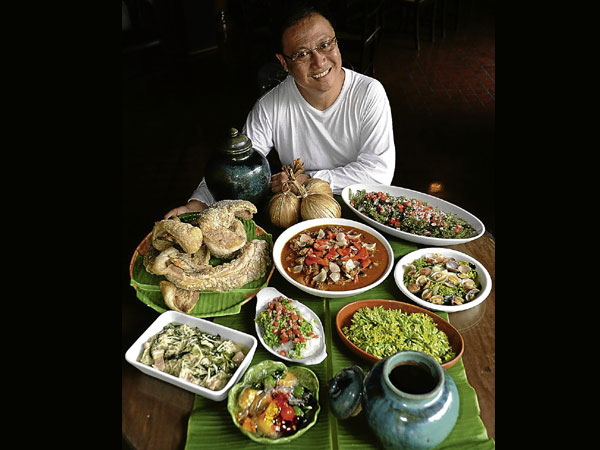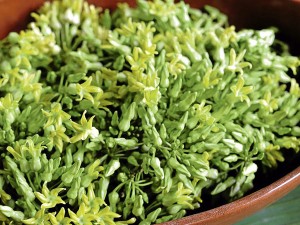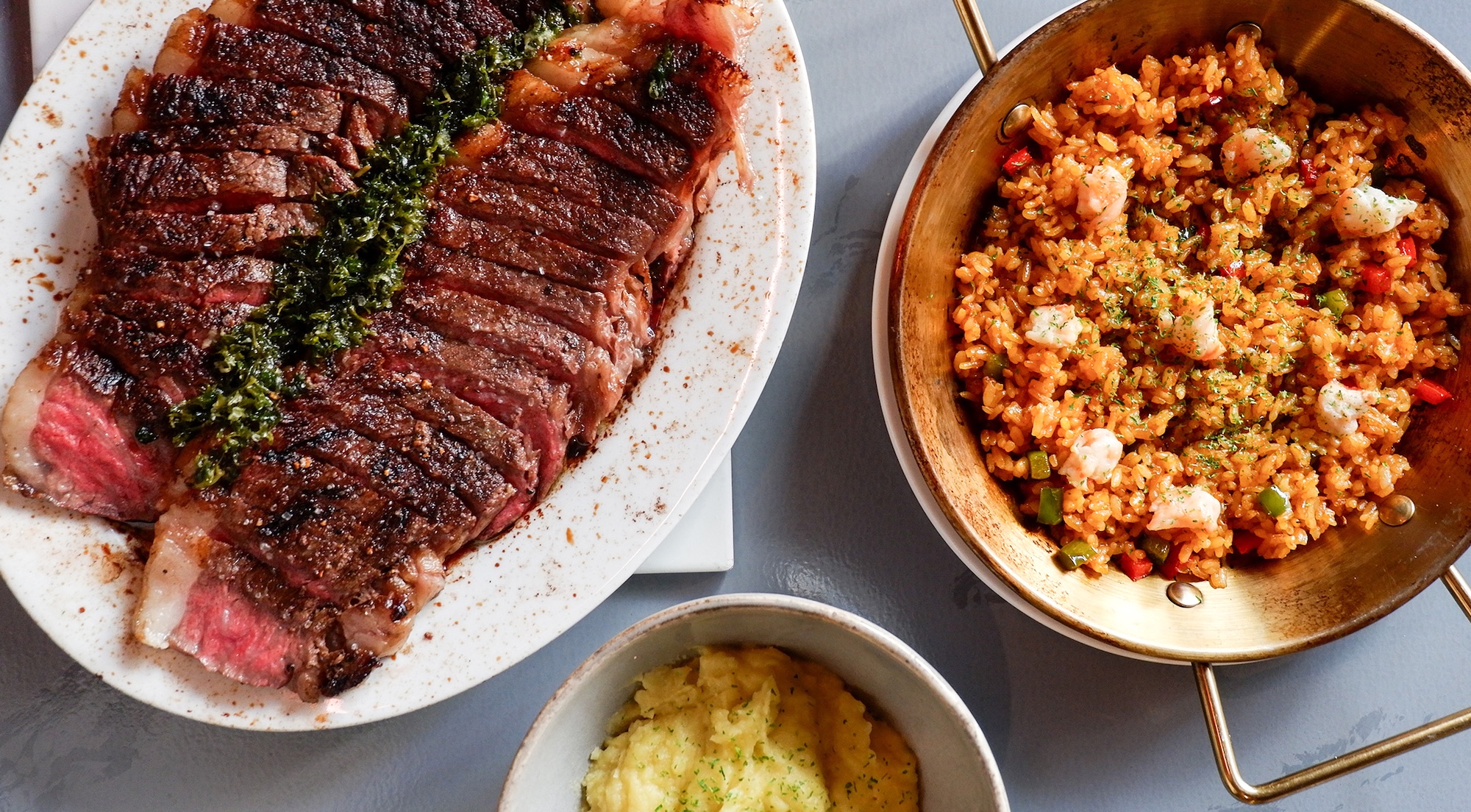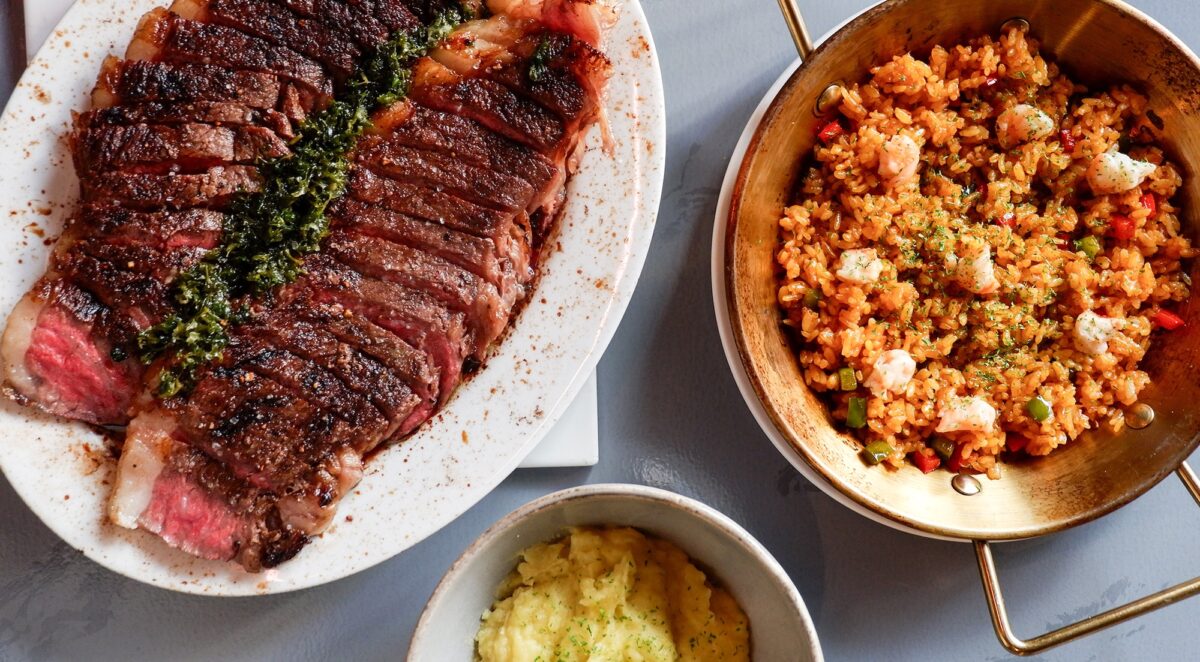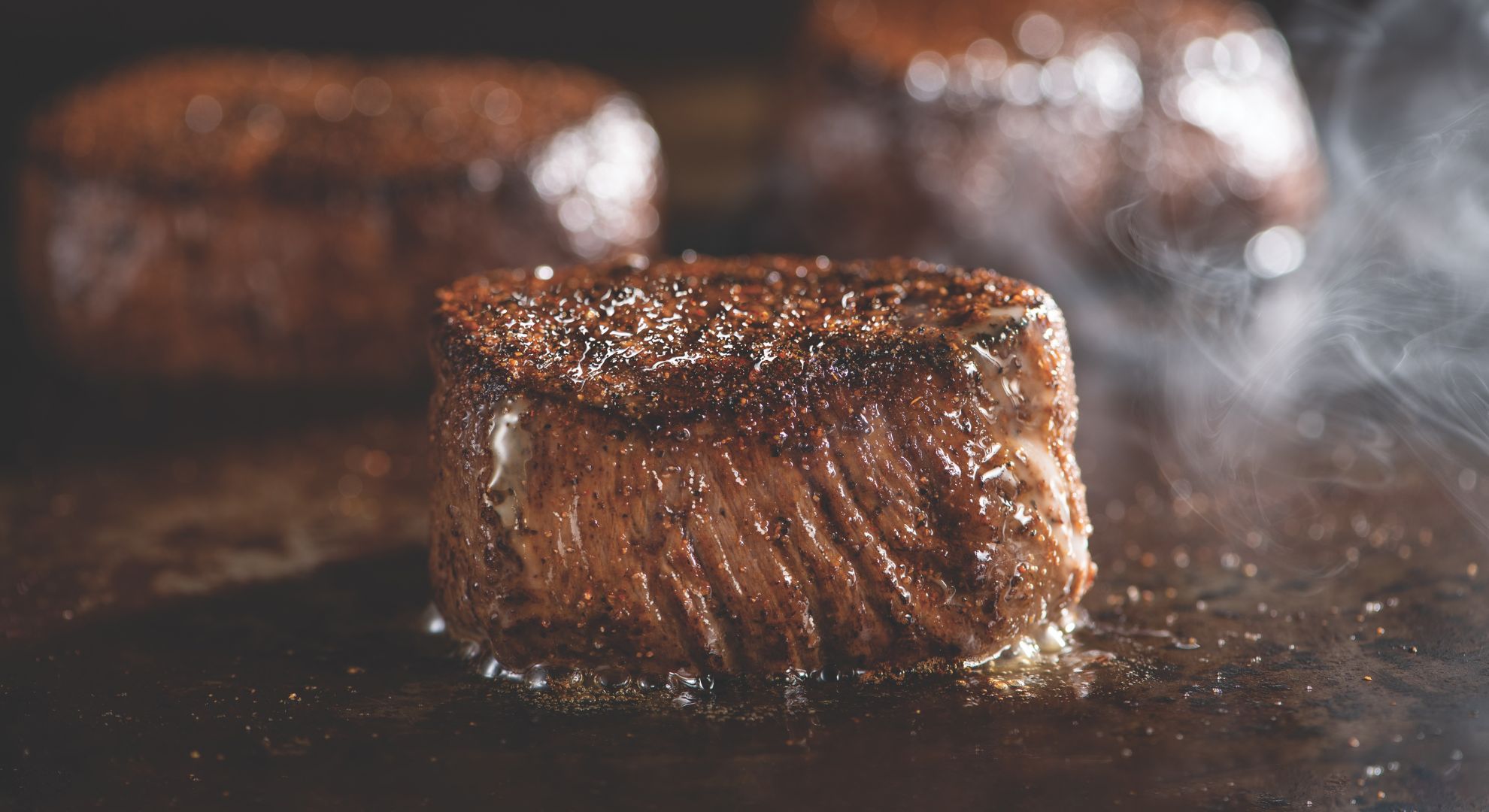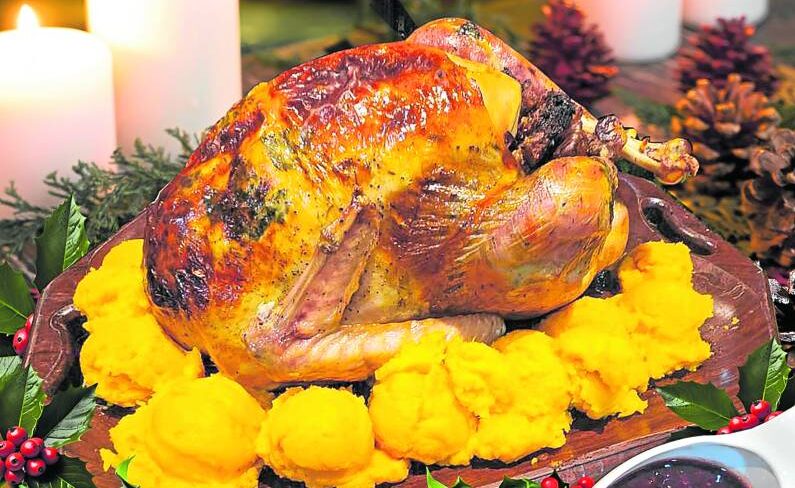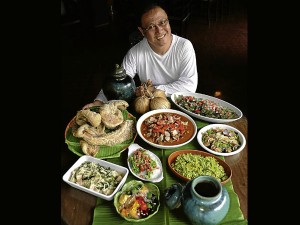
“The word pinakbet comes from the Ilocano word ‘pinakebet’. It means to shrink.
“The secret to good pinakbet is good bagoong.
“Our Ilocano pinakbet consists of the principal vegetables: our native kamote, string beans, sitaw, our small ampalaya, talong, okra and the trademark Ilokanong siling duwag.”
“The original pakbet has kamote. It acts as sweetener.”
“During the summer we add patani or kardios—kardis in Ilokano, the green one.”
The old way of making pakbet is in a palayok (pot).
First brown pork fat, add garlic, shallots, tomato and saute until the juice from the tomatoes dries out and the oil separates.
Then put few tablespoons of bagoong isda. Continue to cook to reduce the liquid.
Then start layering the vegetables on the palayok—first, ginger, eggplant, kamote, string beans, sitaw, okra, siling duwag. Ampalaya should be on top.
Lower heat for the vegetables to sweat without browning, leaving the pot covered until vegetables are soft and have released their flavor.
Add chopped bagnet then, holding the pot on both sides, begin to toss the pot in a circular fashion to move vegetables around. Keep tossing and moving the pot until the eggplants land on top of the pot.
Cook the pakbet until the sauce thickens. The sauce should not be too thick. It is ready once you see the oil starts to separate from the sauce.
The vegetable ratio for 1 kilo of pakbet: 50-100 g of small ampalaya, 400 g eggplant, 200 g kamote, 200 g string beans, 150 g okra, 150 g siling duwag, 200 g tomatoes, 100 g shallots, 100 g ginger, garlic 5 cloves, 200 g taba ng baboy sliced panggisa. Then bagnet all you want.
Dinengdeng is basically made from the freshest vegetables in season but one must classify them. There’s a misconception that you can put them all together just because they’re in season. No, there are vegetables that really go together.
“The standard would be, squash, string beans or sitaw, talong and ampalaya or bitter gourd. If you want it a bit sweeter you can use patola.”
“Another is bamboo shoot which is in season right now, saluyot and the small shrimp we call it kuros, yung tatlong ’yun, best friend.”
“Isa pa—green papaya, chili leaves and ginger.”
Do not put too much bagoong. Bagoong should be used only for flavor, not to season with. Season with salt.
Chef Nick shares his recipes. The goat stewed in basi is so good, a nouvelle kind of kaldereta.
Goat Stewed in Basi
1 kg goat meat
Salt
Pepper
Cooking oil
5 gloves garlic
70 g onion
150 g bacon
50 g tomato paste
½ c basi (12 percent)
20 g flour
Water enough to cover
2 pc bay leaf
2 sprigs thyme
1 pc carrot
30 g liver spread
1 pc red bell pepper
2 pc white onion
Season goat meat with salt and pepper. Brown goat’s meat. Set aside.
Heat oil, saute garlic, onions. Add bacon, brown. Add tomato paste, add basi to deglaze.
Reduce. Add flour. Mix
Add goat meat.
Put water enough to cover, bring to boil.
Add bay leaf, thyme and carrot. Simmer until tender. Add liver spread. Season to taste.
Garnish with sauteed red bell pepper and white onions.
Dinengdeng Nga Papaya with Sabidukong Flowers
4 c water
2 tbsp bagoong isda
50 g ginger
1 pc medium white onions
250 g green papaya thinly sliced
1 c sabidukong flowers (seasonal blooms that are light green in color; resembles ylang-ylang)
½ c chili leaves
Handful of shells (halaan)
Boil water and bagoong isda, remove scum. Add ginger. • Simmer for 10 minutes to infuse flavors
Put onions, green papaya. When papaya is half-cooked, add sabidukong flowers and chili leaves.
Add shells if available. Season with salt.
Binagoongan Nga Rabong
½ kg liempo, cut into ½-inch cubes
3 tbsp bagoong isda
2 c rabong (bamboo shoots), sliced
1 c saluyot leaves
Salt
Put liempo in a casserole, add water enough to cover meat. Cook until tender. Skim the scum. Add bagoong isda, skim again.
Add bamboo shoots, cook until soft. Put saluyot leaves.
Season with salt
Chef Nick can send your orders to Manila. You have to taste his super kunat chocolate cake, old-time pastries masa podrida and yemas, and his native black pig bagnet.
Call 0939-3367518, 0905-282 2524 or visit him at Bistro Candon, Candon City, Ilocos Sur.
Classes
For my new cooking class schedules call 0917-5543700, 0908-2372346, 4008496, 9289296.
E-mail the author at raspiras@inquirer.com.ph

